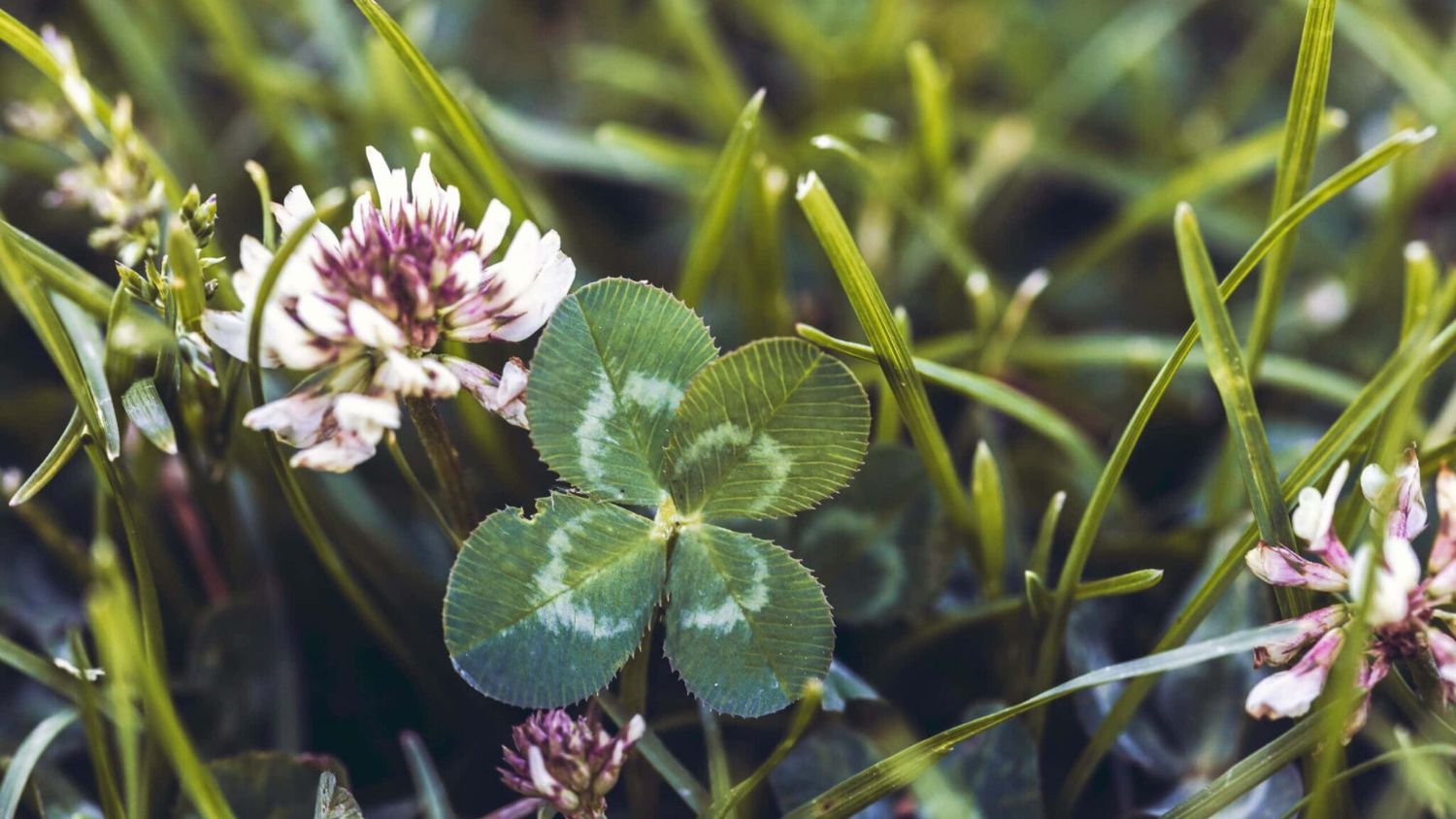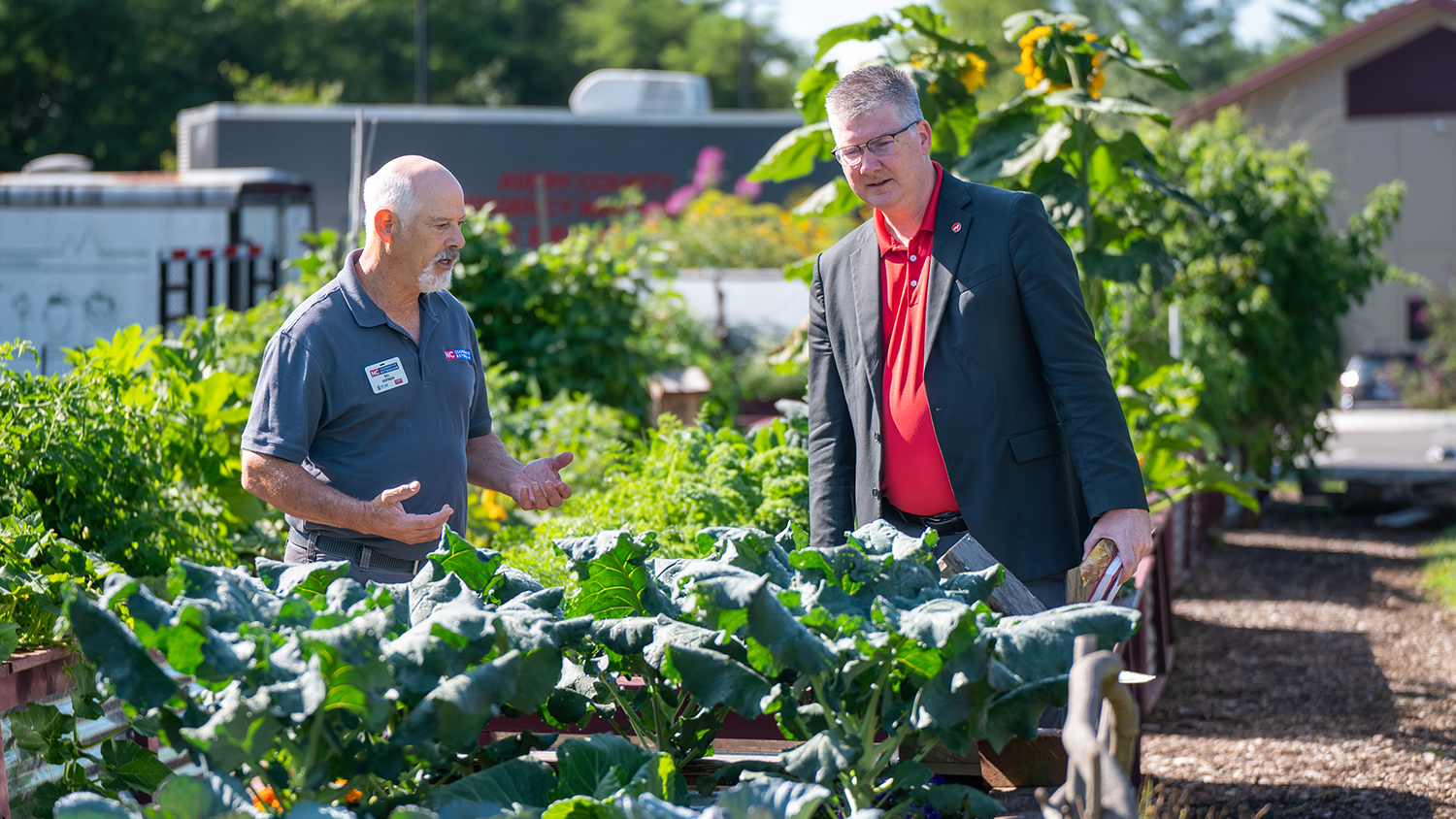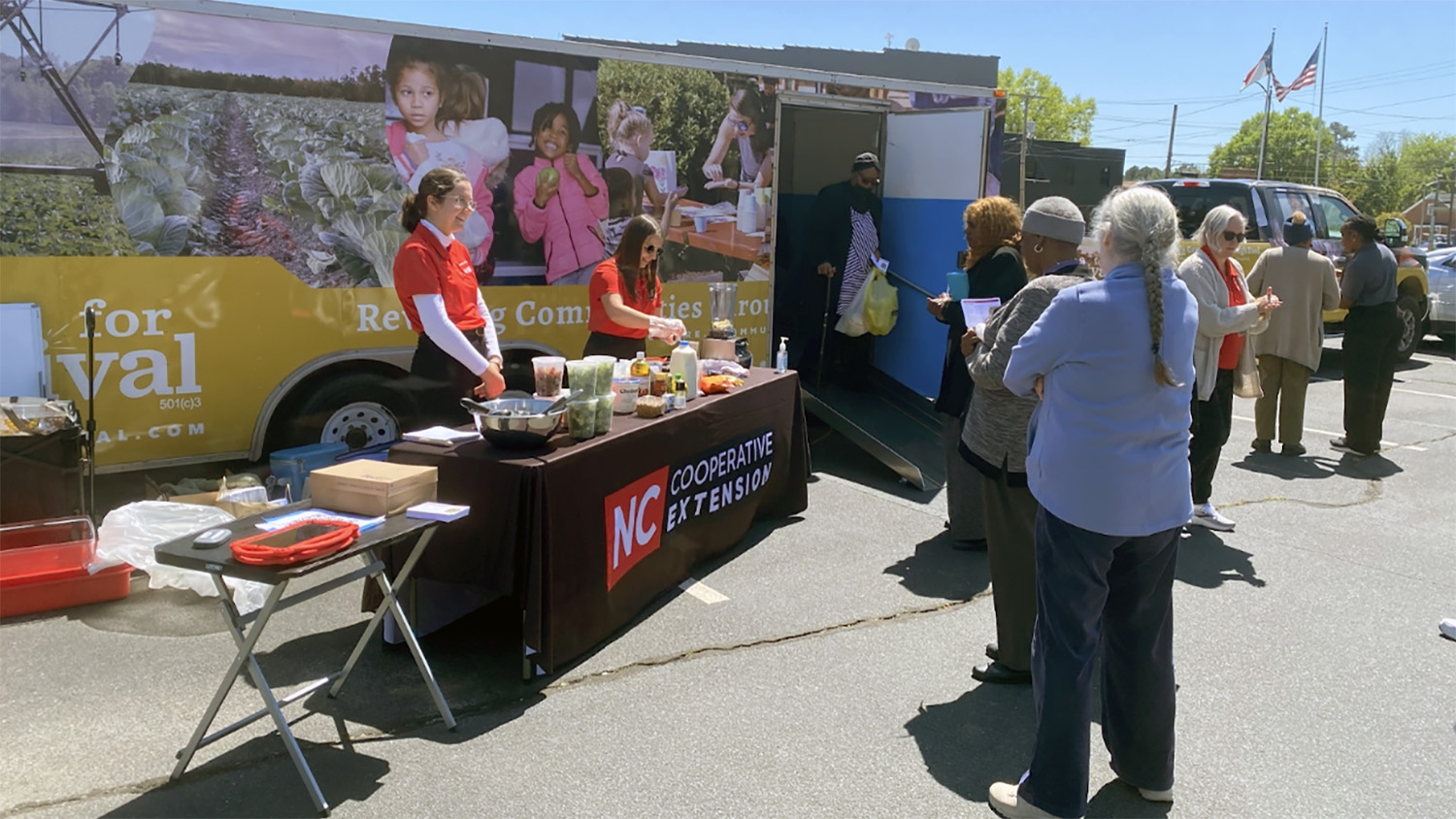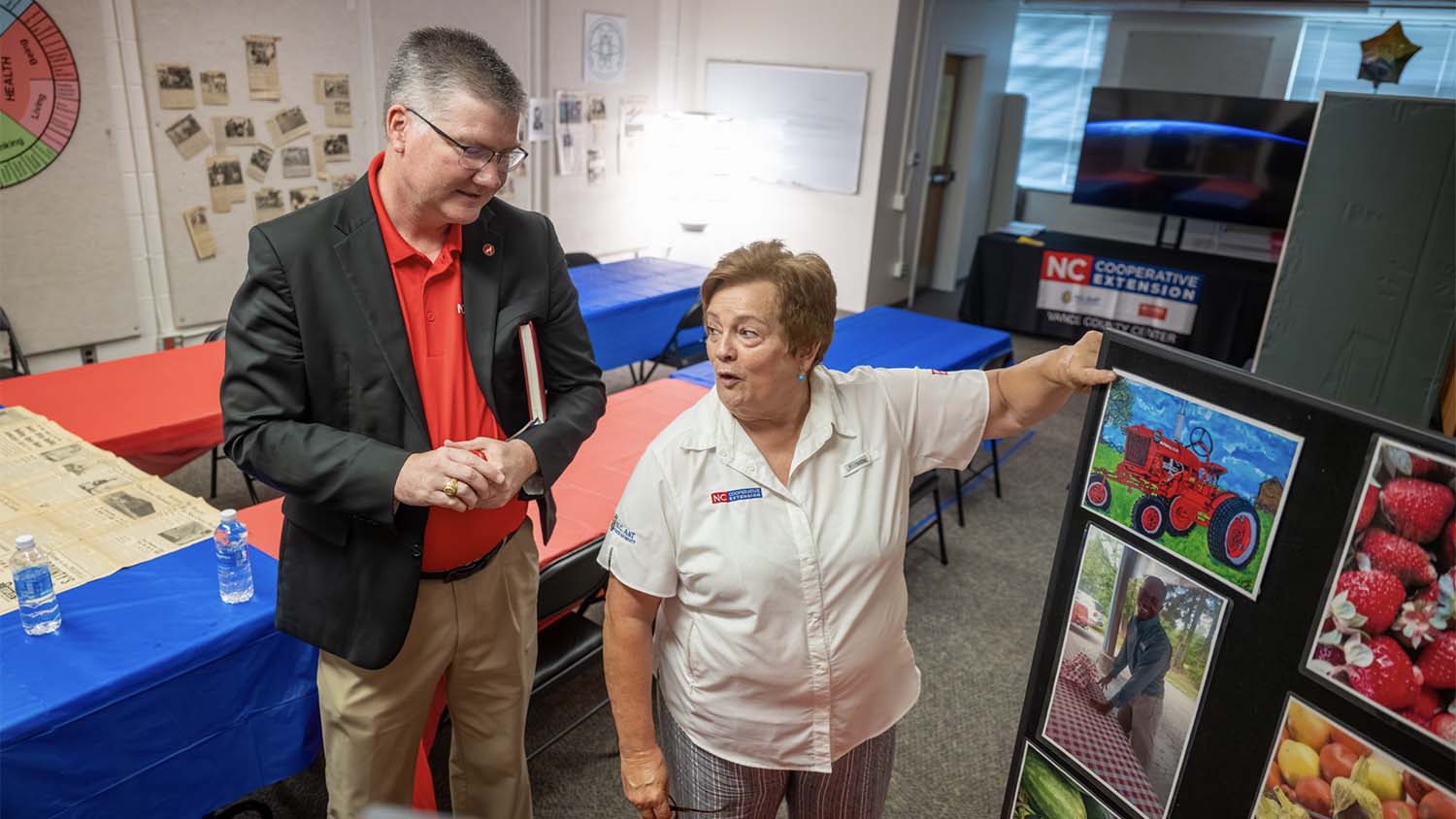In North Carolina, It Should Probably Be ‘No Mow March’

Editor’s note: This blog post is part of a series of interviews with NC State University experts exploring whether homeowners in North Carolina could make a difference for pollinators through lawn and garden design, maintenance or planting.
There are 2 million acres of turfgrass growing in North Carolina, and most of it – about 60% – is growing on home lawns. For some people, mowing all of that grass is just another chore. For others, it’s part of maintaining a beautiful landscape that can tolerate a lot of running, playing and rolling around.
According to Grady Miller, professor of crop and soil sciences and an extension specialist at North Carolina State University, mowing is an important tool for weed control, and is a requirement for spurring healthy lawn growth.
The Abstract spoke to Miller about the role of mowing and the types of turfgrasses that grow in North Carolina in light of the “No Mow May” initiative. The effort was launched to encourage homeowners not to mow during the month of May. The goal of the effort was to aid pollinators by allowing flowering plants, aka bee food, to grow.
“The origin of ‘No Mow May’ was in the United Kingdom, which uses a different turfgrass than North Carolina, has a different climate, and is less diverse in terms of the turfgrasses they grow,” Miller said. “It’s not as simple as other awareness campaigns where you can pick a random month. You’re talking about plants that are responding to environmental inputs, within a diverse, changing climate.”
TA: What kind of grasses grow in North Carolina, and why is mowing important to growing them?
Miller: In North Carolina, we’re in a transition zone. What that means is basically to our south, you primarily grow warm-season grasses, and north of us, you primarily grow cool-season grasses. We’re in the transition zone where we grow both. It’s good we have this huge palette of grasses to choose from, but we’re not ideal for either. You also see a lot of diversity of grasses grown depending on where you are in the state. We’re one of about three states that are this diverse in what we grow. If you move into the Piedmont to the coastal areas, you see less and less cool-season grasses, and more warm-season ones.
“No Mow May” is designed for cool-season grasses like tall fescue and Kentucky bluegrass. It was started in the United Kingdom, which is higher in latitude to us. Cool season grasses are going to start growing a little earlier in North Carolina’s warm climate in late February, March, April. By May, we often see that they’re starting to get stressed by heat in some years because it’s near their period of most active growth. That could be a damaging time to stop mowing. That’s because as you continue to mow, it encourages the plant to put out new shoots. The growth point of the turf growth plant is near the base of the plant. If I had to tell people when not to mow cool season grass, I would be saying “No Mow March.” It would be two months earlier to have the same sort of influence. This would also correspond to a prominent period of other plants flowering.
I think it’s probably easier to do with warm season grasses. Warm season grasses go dormant after the first frost in the fall. They’re brown until we start getting warm temperatures and longer day lengths in late spring. The dates of when they start growing move around the state in different areas, and depending on the weather conditions. Most years, we may see some green-up in March for warm season grasses, but you don’t get vigorous healthy growth until May.
TA: Are there wider concerns about encouraging non-native weeds by not mowing?
Miller: Mowing is one of our primary forms of weed control in turfgrass. One of the problems in the U.S. is that one of the first plants that comes up is usually the dandelion, which is a non-native species. With dandelions, you get those little puffballs – you would blow on them as a kid and they fly with the breeze. That’s a common spring weed in lawns. Let’s say you don’t mow in May, but all your neighbors don’t buy into it, so you get a bunch of dandelions, which are very easily spread by wind. Next year they have dandelions coming up in their yard because you’ve seeded the neighborhood.
Another potential weed that’s going to be a food source for pollinators, henbit, is germinating now in North Carolina. It’s really starting to flower. So the timing of the best time to mow, and when not to mow, might depend on the plant species you’re trying to encourage.
TA: If people love a pristine green lawn, are there ways to make your lawn more friendly to plants/animals? How easy is this to do?
Miller: In my opinion, there are much better ways to promote insect diversity than by not mowing for a month. If you really want to target habitat for pollinators, then target habitat. Take part of your yard out of turfgrass, and increase the habitat the whole year. Dedicate part of your landscape to putting in plants that insects love.
Another option is to seed your lawn with clover. You can buy white clover or a microclover, which is smaller than the Dutch white clover that you grew up thinking about. You could seed that into your own lawn, and that would provide nectar for a pollinator. Look for rose clover, white clover or microclover.
TA: Are there ways to tweak your lawn maintenance practices to improve biodiversity?
Miller: The term “organic” has a lot of meanings for different people. Some people just do not want to use inorganic chemistries on their lawn. We have information on organic lawn maintenance and pest control on our website. The other issue is, when you switch from a traditional inorganic approach to an organic approach, one of the first things you may have to do is lower your standards. You may not always get the same level of performance in terms of greenness, thickness or weed control. That’s important for some people and it’s not important for others. Some people like their lawns to look like a golf course, and some people don’t care if it’s weedy. To each their own.
TA: What do you see in terms of how preferences for lawn care, and whether that’s changing?
Miller: I think we’re going to see more shifts in how people view lawns and lawn maintenance over the years. Researchers have done surveys to get that information. For homeowners looking for good information, and also for alternatives, our Turffiles is one of the largest and best resources in the United States. It’s a repository of all things turf. We have publications on lawn care, and specialized information about insect disease or weeds as part of that.
This post was originally published in NC State News.
- Categories:


